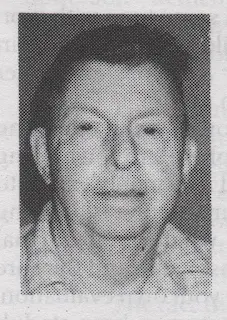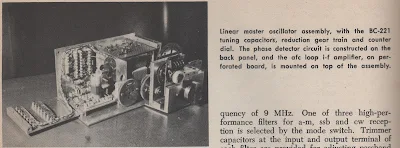From Wikipedia: https://en.wikipedia.org/wiki/Amateur_radio_homebrew
In the early years of amateur radio, long before factory-built gear was easily available, hams built their own transmitting and receiving equipment, known as homebrewing.[2] In the 1930s, 40s, and 50s, hams handcrafted reasonable-quality vacuum tube-based transmitters and receivers which were often housed in their basements, and it was common for a well-built "homebrew rig" to cover all the high frequency bands (1.8 to 30 MHz). After WWII ended, surplus material (transmitters/receivers, etc.), was readily available, providing previously unavailable material at costs low enough for amateur experimental use.[3]
Homebrewing was often encouraged by amateur radio publications. In 1950, CQ Amateur Radio Magazine announced a ‘‘$1000 Cash Prize ‘Home Brew’ Contest’’ and called independently-built equipment ‘‘the type of gear which has helped to make amateur radio our greatest reservoir of technical proficiency.’’ The magazine tried to steer hams back into building by sponsoring such competitions and by publishing more construction plans, saying that homebrewing imparted a powerful technical mastery to hams. In 1958, a CQ editorial opined that if ham radio lost status as a technical activity, it might also lose the privilege of operating on the public airwaves, saying, ‘‘As our ranks of home constructors thin we also fall to a lower technical level as a group’’.[4]
In the 1950s and 60s, some hams turned to constructing their stations from kits sold by Heathkit, Eico, EF Johnson, Allied Radio's Knight-Kit, World Radio Laboratories and other suppliers.[5]
From "From Crystal Sets to Sideband" by Frank Harris K0IYE https://www.qsl.net/k0iye/
Dear Radio Amateur,
I began writing this book when I realized that my homebuilt station seemed to be almost unique on the air. For me, the education and fun of building radios is one of the best parts of ham radio. It appeared to me that homebrewing was rapidly disappearing, so I wrote articles about it for my local radio club newsletter. My ham friends liked the articles, but they rarely built anything. I realized that most modern hams lack the basic skills and knowledge to build radios usable on the air today. My articles were too brief to help them, but perhaps a detailed guide might help revive homebuilding. I have tried to write the book that I wish had been available when I was a novice operator back in 1957. I knew that rejuvenating homebuilding was probably unrealistic, but I enjoy writing. This project has been satisfying and extremely educational for me. I hope you'll find the book useful...
...My personal definition of “homebuilding” is that I build my own equipment starting from simple components that (I hope) I understand. I try not to buy equipment or subassemblies specifically designed for amateur radio. I am proud to be the bane of most of the advertisers in ham radio magazines. I still buy individual electrical components, of course. I just pretend that the electronics industry never got around to inventing radio communications.
An irony of our hobby is that, when the few remaining homebrewers retire from their day jobs, they often build and sell ham radio equipment. These industrious guys manufacture and sell every imaginable ham gizmo. I doubt any of them have noticed that, by making everything readily available, they have discouraged homebuilding.






























